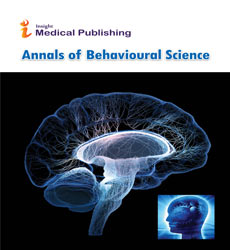Explicit Anxiety Measures Demonstrated Specificity in Predicting Grades
Carolin Riba *
Department of Psychological Medicine, Institute of Psychiatry, London, United Kingdom
- *Corresponding Author:
- Carolin Riba
Department of Psychological Medicine, Institute of Psychiatry, London, United Kingdom
E-mail: carolinr@gmail.com
Received date: October 25, 2022, Manuscript No. IPABS-22-14909; Editor assigned date: October 27, 2022, PreQC No. IPABS-22-14909(PQ); Reviewed date: November 07, 2022, QC No IPABS-22-14909; Revised date: November 17, 2022, Manuscript No. IPABS-22-14909 (R); Published date: November 24, 2022, DOI: 10.36648/2471-7975.8.7.77
Citation: Riba C (2022) Explicit Anxiety Measures Demonstrated Specificity in Predicting Grades. Ann of Behave Sci Vol. 8 No.7:77
Description
Math–anxiety associations were not related to one another and did not uniquely or specifically predict math behavior or state math anxiety, contrary to our hypotheses. In addition to predicting state math anxiety, explicit anxiety measures demonstrated specificity in predicting grades in English and math. The investigation of implicitly measured math-anxiety associations and their connection to math anxiety and math behavior are the novel aspects of this study. The development of tasks that are better able to capture the most relevant math-threat associations and the investigation of which math behavior might be influenced by these associations require additional research. As with other forms of anxiety, we hypothesized that a combination of associative and rule-based processing results in math behavior. Therefore, in addition to explicit measures, indirect or implicit measures are essential for fully understanding math anxiety in order to capture associative processing and predict math behavior. These findings contribute to our comprehension of anxiety behavior and suggest that anxiety associations are involved in anxiety behavior independently of explicitly reported anxiety. Math behavior is influenced by math associations, as shown by these findings, which begin at a young age. Math-anxiety associations are likely to play a significant role in both math anxiety and math behavior.
Explained Variance
Surprisingly, there isn't much research on math associations and math anxiety. In conclusion, previous research has demonstrated that associations between math and anxiety both predicted additional variance that was not explicitly measured and explained variance in (math) behavior and performance. This indicates that specific associations between anxiety and math may be relevant to math anxiety and math behavior. Therefore, the purpose of this study was to first determine whether explicit measures of math anxiety and implicit measures of math–anxiety associations were related; second, whether or not associations between math and anxiety predicted distinct variations in math behavior and state math anxiety; and, thirdly, whether or not anxiety associations specifically predicted behavior for a single domain. The current study was conducted on adolescents due to math anxiety's peak during adolescence. Reassurance during patient counseling comes from the fact that IVF did not increase risk for stress, state anxiety, or pregnancy-related anxiety among our participants. We found those women’s levels of state and pregnancy-related anxiety decreased closer to birth, which may contribute to a successful emotional transition to parenthood. Despite the fact that pregnant women overall experienced greater levels of state and pregnancy-related anxiety than men, Given the recent focus on male postpartum depression, additional research into men's anxiety experiences is needed.
Postpartum Depression
Tracking the learning process is one aspect of nursing education. Prior to exams, many students attempt to cope with their anxiety. The goal of this study was to find out how Emotional Freedom Techniques (EFT) helped nursing students in Turkey who were taking the Women's Health and Diseases Nursing course lessen their anxiety about exams. Exam anxiety was significantly reduced by EFT. Listening to music and practicing deep breathing were the most common means of coping with anxiety used by nearly half of the students. Nevertheless, the initial level of anxiety was quite high. After the EFT sessions, the levels of state, trait, and exam anxiety decreased statistically significantly. After three sessions of EFT, the subjective exam anxiety level showed more than half success. Many questions remain regarding participant state anxiety in outdoor therapeutic practices. We present and discuss the findings of an exploratory pilot study on participant day-to-day state anxiety during a Norwegian wilderness therapy intervention to assist in educating the public on this significant issue. As the program progressed, state anxiety decreased slightly on average, and it significantly decreased between the first and last days. There was a wide range of responses across subjects, and boys reported significantly less anxiety than girls did. Gender differences, group differences, the perception of risk, and the connection between perceived autonomy and state anxiety are all topics we address in light of the findings. The paper concludes with recommendations for the entire field of outdoor therapy.
Open Access Journals
- Aquaculture & Veterinary Science
- Chemistry & Chemical Sciences
- Clinical Sciences
- Engineering
- General Science
- Genetics & Molecular Biology
- Health Care & Nursing
- Immunology & Microbiology
- Materials Science
- Mathematics & Physics
- Medical Sciences
- Neurology & Psychiatry
- Oncology & Cancer Science
- Pharmaceutical Sciences
